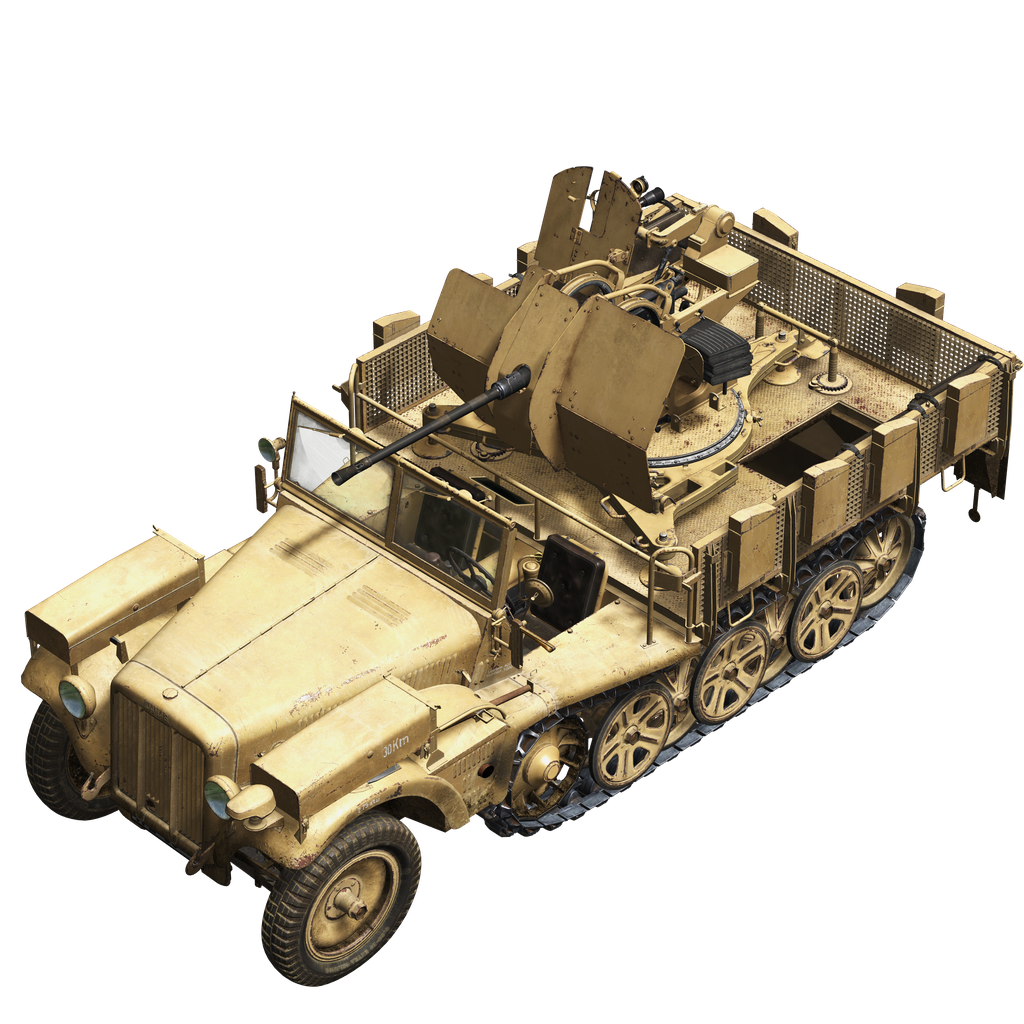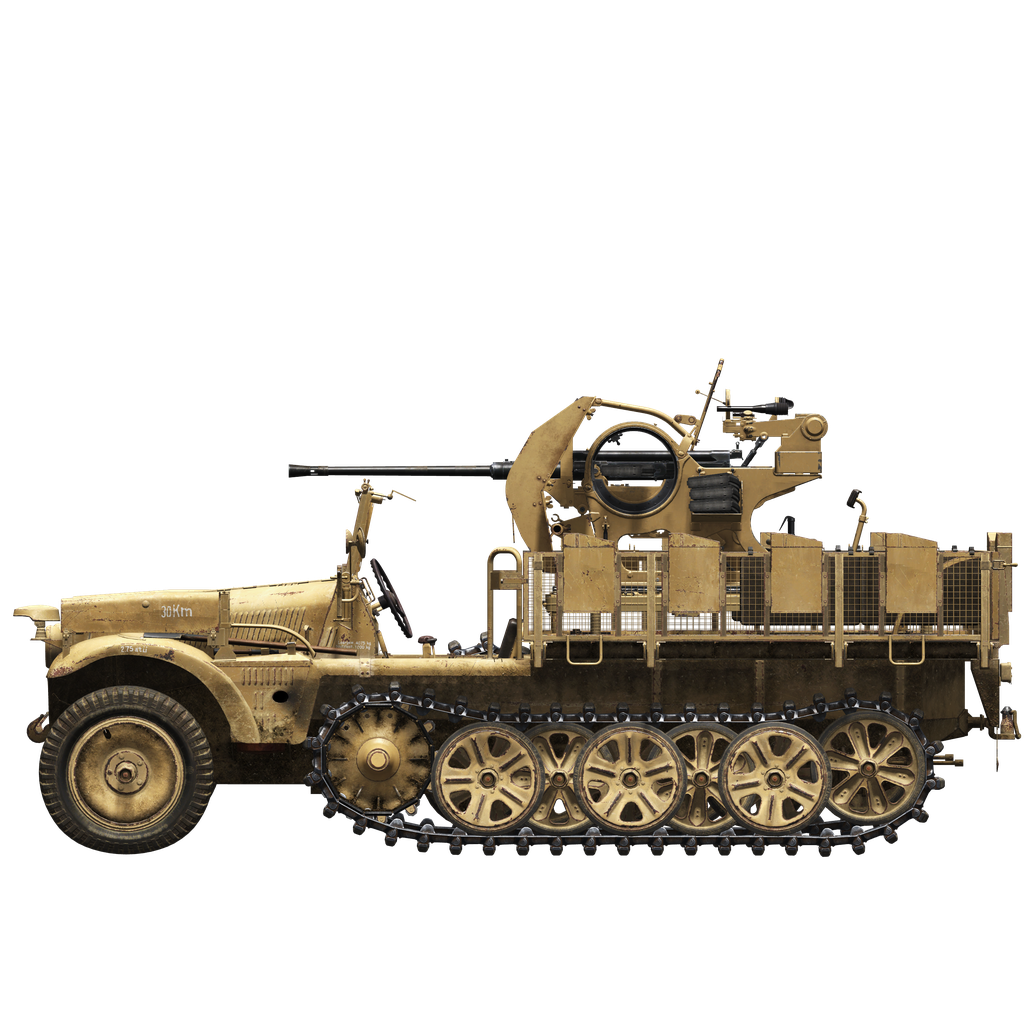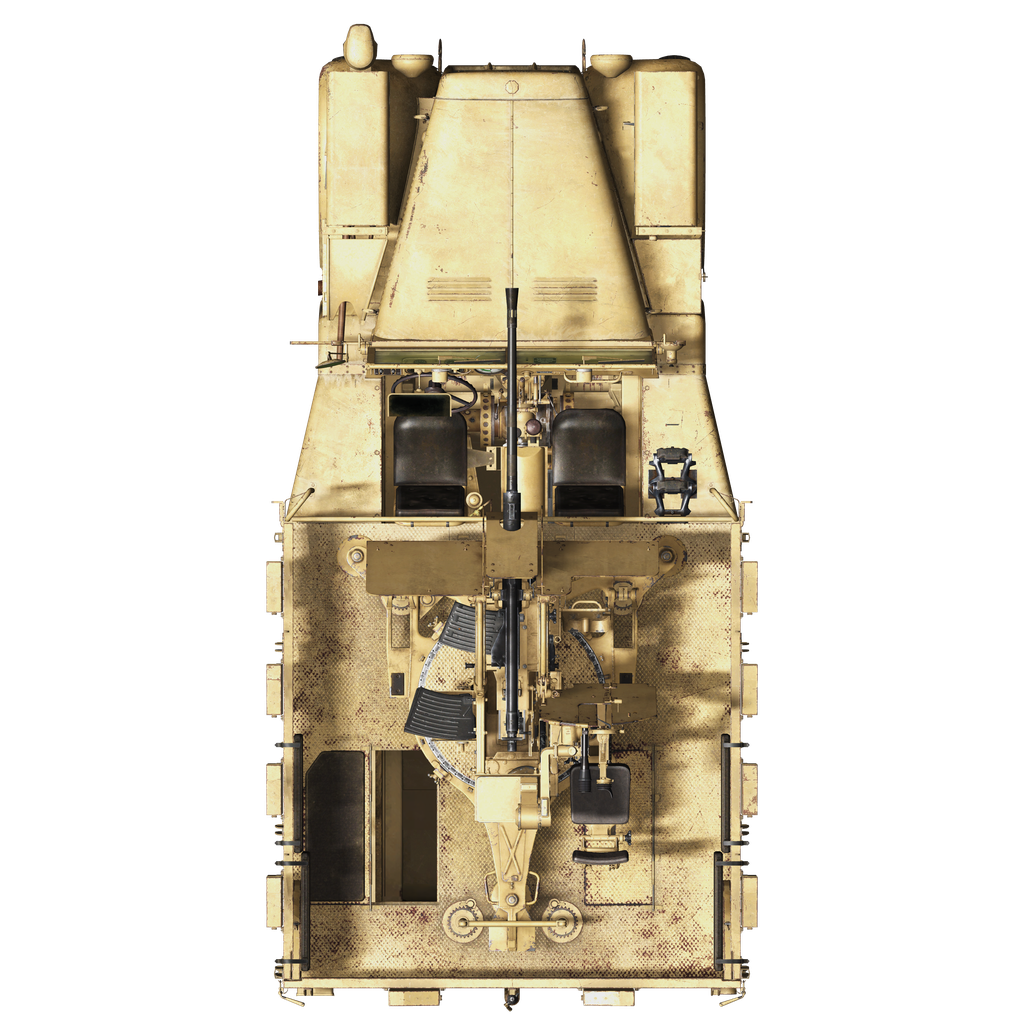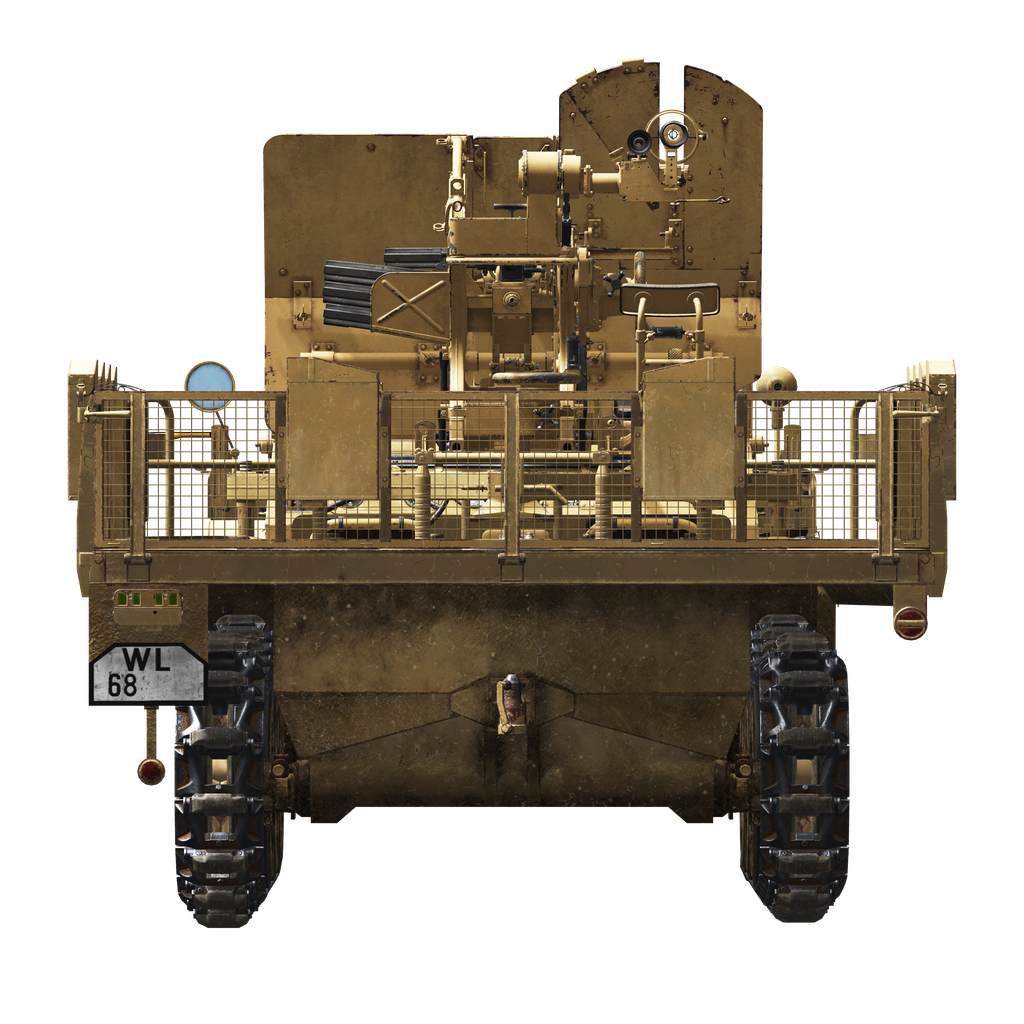A halftrack tractor for infantry, light antiaircraft and antitank guns was developed by the Demag company in the years 1934-1938: from 1938, the Demag D 7 version went into series production, which received the standard designation "leichter Zugkraftwagen 1 t" ("light 1-t tractor") — Sd. Kfz. 10. Almost immediately after the start of the production of these tractors the idea arose to install a 20 mm automatic antiaircraft gun on them, and in 1939 the self-propelled antiaircraft gun Sd.Kfz.10/4 with a 20 mm antiaircraft gun mod. 30, and in 1941 the Sd.Kfz.10/5 with a gun mod. 1938 were introduced.
The 2 cm Flak auf Fahrgestell Zugkraftwagen 1 t (Sd.Kfz.10/5) - "20 mm antiaircraft system on 1-t tractor chassis" differed from earlier modifications by a faster firing antiaircraft gun and the presence of factory-fitted armor protection.
The tractor was built according to a layout with the engine in the front, a frontally-steered wheeled axle, and an idler instead of a rear axle. The use of such a half-track chassis offered a number of advantages, including the ability to simplify the design of the vehicle (complex final drives and additional clutches were eliminated) while maintaining the high maneuverability characteristic of tracked vehicles. The driver and commander of the vehicle sat in the front in an open compartment, separated from the body by a low partition. This vehicle differed from other tractors in the design of the cargo platform: the sides and the rear were made in the form of a frame made of steel corners covered with steel mesh, which were folded into the horizontal position in the combat position. In addition, the radiator and cab of some vehicles were covered with 8 mm of armor.
The vehicle's armament was a 20 mm Flak 38 automatic cannon mounted on a cargo platform on a standard chassis — a triangular base with three colters. The gun crew was protected by a shield and the ammunition was supplied from magazines with a capacity of 20 rounds. The transportable ammunition amounted to 280 rounds and was placed in containers on the sides of the platform; the self-propelled gun could also tow a single-axle trailer with additional ammunition. Two types of shells were used: 2 cm Pzgr. L'spur solid armor-piercing (weight 148 g, initial velocity 780 m/s, armor penetration 33 mm at 500 m) and 2 cm Spgr. Patr. fragmentation (115 g, 880 m/s). The gun had a rate of fire of 450 rounds per minute.
A total of 610 Sd.Kfz.10/5s were built.
The main tactical unit in which halftrack self-propelled guns were used was the light antiaircraft self-propelled company. The company included platoons of self-propelled and towed guns and was attached to a division, usually an armored division, less often a motorized or infantry division, or a corps. On June 22, 1941, 17 such companies were attached to tank divisions, 4 to motorized divisions, 2 to infantry divisions, 15 to corps, and the remaining 19 were in the reserves of armies, tank groups, and army groups. These companies were administratively grouped into antiaircraft battalions. In addition to the companies assigned to divisions, self-propelled antiaircraft guns were used in the antiaircraft battalions of the reserve of the Supreme Command. By the end of 1942, the Wehrmacht had 13 such battalions, 10 of which were self-propelled.
Initially, under the conditions of Luftwaffe air supremacy on the Eastern Front, 20 mm self-propelled guns were mainly used to support ground forces and fire at ground targets, but gradually, with the loss of this dominance, they began to be used for air defense. The main disadvantage of these installations was considered to be the practical lack of armor, which did not allow them to be used directly in frontline combat formations.
Used sources:
1. V. Oswald “Complete catalog of military vehicles and tanks of Germany”, 2002
2. A. Lobanov “Hitler’s Tank Forces” 2010
3. J. Ledwoch, R. Sawicki “2 cm Flak 30/38 Sfl Sd Kfz 10/4”, 2010
One of the many Sd.Kfz.10 half-track modifications produced by Demag company as mobile Flak 38 anti-air gun platform since 1939.
This fully metallic integral body half-track was propelled by a double differential tracked chassis with brakes (forward steering wheels don\'t have brakes) and had a custom metallic platform where the gun was installed.
20mm Flak 38 anti-air gun was a modification of the earlier Flak 30 design with doubled rate of fire and improved two-speed lateral and vertical aiming system, its production started in 1938.
Unladen weight: ~4900 kg.
Length: 4.8 m.
Width: 2.4 m.
Height: 2.4 m.
Clearance: 310 mm.
Engine: Maybach HL42 TRKM, petrol.
Maximum power: 100 HP at 2800 RPM.
Maximum RPM: 3000 RPM.
7 speed gearbox.
Maximum road speed:
1st: 5.9 kph.
2nd: 9.6 kph.
3rd: 13.9 kph.
4th: 21.4 kph.
5th: 33.2 kph.
6th: 51.4 kph.
7th: 69.6 kph.
Reverse 1st: 5.9 kph.
Reverse 2nd: 9.6 kph.
Reverse 3rd: 13.9 kph.
Maximum offroad speed: 25 kph.
Fluids:
Internal fuel tanks capacity: 90 l.
Engine oil system capacity: 12 l.
Engine coolant: 18 l. of water
Endurance range: 260 km.
Maximum oil consumption: 1 l/h.
Optional armour shield:
6 mm rolled armour.
Main gun: rifled, 20 mm Flak 38.
Barrel length: 65.
Elevation: +85°..-12°.
Ammo: up to 280 rounds (14 clips, 20 rounds per clip).
Rate of fire: 450 rounds per minute.
Turret drive: mechanical, 6 seconds per rotation.
Ammunition:
2 cm Pzgr. L\'spur armour piercing solid (AP): 148 g, 780 m/s, 33 mm at 500 m.
2 cm Spgr.Patr. high explosive (HE): 115 g, 880 m/s, 6 g explosives.
Gunsights:
Schwebekreis Visier 38 mechanical AA gunsight.
ZF 3x8 telescopic gunsight for engaging ground targets.
Reserve iron sights.





